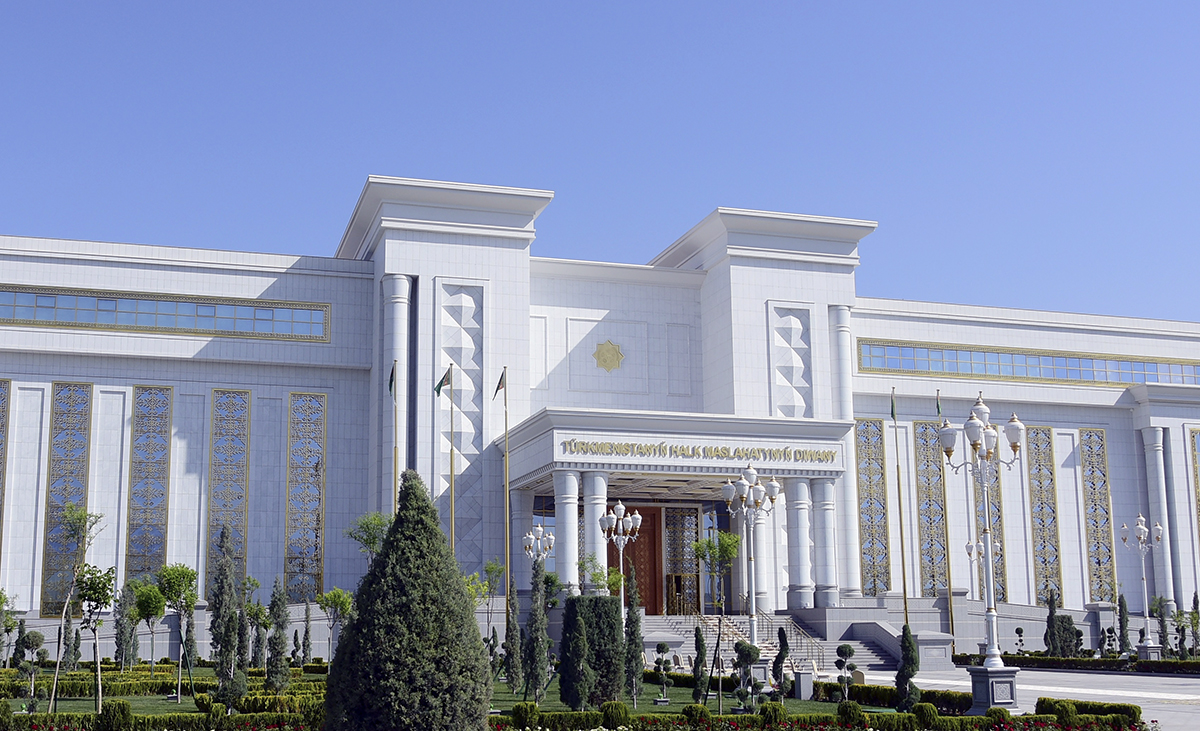In several kilometers far from capital, among cultivated fields and vineyards, hills, running away to strong Kopetdag ranges, two famous barrows rise above like a time eternity. It is famous for the fact that among numerous artifacts in the course of excavations held by expedition under leadership of archeologist R. Pampelli, it was founded the evidences that residents of local ancient settlements for the first time in the history of humanity started to cultivate wheat and barley, bake bread from white wheat flour.

That time, the results of this expedition became sensation for scientific world and notion “culture of Anew” was introduced into scientific circulation. Presently, the reminder of five thousand-year old wheat grains preserved miraculously in the layer of coal in the southern hill of Anew and discovered 110 years ago – in 1904 are kept in the exposition of “Ak buday” National Museum. Today, these grains “sprouted” thought centuries have grown with golden field of prosperity of the Turkmen people, their creative power, diligent and talent.

This museum became a symbol of adherence of the Turkmen people in spiritual traditions of ancestors and many guests of our country desire to come here to see with own eyes the unique exhibits, telling about origin and development of agriculture in Kopetdag foothills.
Among these exhibits is the stony manual grain mill (II century B.C.) intended for grain crushing, manual grinding millstones (III-II centuries B.C.), oil press for wringing of oil from sesame seeds and many other articles of use of the first farmers.

In the museum collection, particular place was attached to terra-cotta statuettes (Namazga depe, IV century B.C.) of goddesses of fertility worshiped by the people in the hope of rich crop and generosity of land. Statuettes were petite images of sitting women, their eyes were reproduced with oval peenings resemble to wheat grains, hairs were braid. On the shoulders of one of them were depicted the images of ears of wheat, on other ones – drops of rain or lightning connected with the fertility. These statuettes took worthy place in the houses of ancient farmers: on special niche near hearth.

Bronze mattock (II century B.C.), arrowhead, bronze knife (III-II centuries B.C.), fragments of ceramic dishes with monochrome pictures are of great interest for visitors. Ceramic articles, being kept in the museum, are presented by hums (jugs of large sizes), jugs for water, oil (golcha), glazed jugs for national beverages – chal, small dishes (drinking bowls, plates, vases for fruits and for flowers, as well as bottles for aromatic oils, perfumes, medicinal drugs). There are the hand-made articles as well as glazed and partially glazed, stamped ceramics made on potter's wheel without images and with geometric or vegetable patters.

Labor tools and household stuff of XIX-XX centuries continue the exposition. These are wooden ploughs with metallic ploughshares, copper teapots, samovars, scissors for sheep shearing, labor tools of blacksmiths, jewelers, fragments of loom and many others, which are of great interest for historians and archeologists. Sheaves of wheat of those sorts, which are the attainments of modern selectionists, are logical addition to the museum collection.

That time, the results of this expedition became sensation for scientific world and notion “culture of Anew” was introduced into scientific circulation. Presently, the reminder of five thousand-year old wheat grains preserved miraculously in the layer of coal in the southern hill of Anew and discovered 110 years ago – in 1904 are kept in the exposition of “Ak buday” National Museum. Today, these grains “sprouted” thought centuries have grown with golden field of prosperity of the Turkmen people, their creative power, diligent and talent.

This museum became a symbol of adherence of the Turkmen people in spiritual traditions of ancestors and many guests of our country desire to come here to see with own eyes the unique exhibits, telling about origin and development of agriculture in Kopetdag foothills.
Among these exhibits is the stony manual grain mill (II century B.C.) intended for grain crushing, manual grinding millstones (III-II centuries B.C.), oil press for wringing of oil from sesame seeds and many other articles of use of the first farmers.

In the museum collection, particular place was attached to terra-cotta statuettes (Namazga depe, IV century B.C.) of goddesses of fertility worshiped by the people in the hope of rich crop and generosity of land. Statuettes were petite images of sitting women, their eyes were reproduced with oval peenings resemble to wheat grains, hairs were braid. On the shoulders of one of them were depicted the images of ears of wheat, on other ones – drops of rain or lightning connected with the fertility. These statuettes took worthy place in the houses of ancient farmers: on special niche near hearth.

Bronze mattock (II century B.C.), arrowhead, bronze knife (III-II centuries B.C.), fragments of ceramic dishes with monochrome pictures are of great interest for visitors. Ceramic articles, being kept in the museum, are presented by hums (jugs of large sizes), jugs for water, oil (golcha), glazed jugs for national beverages – chal, small dishes (drinking bowls, plates, vases for fruits and for flowers, as well as bottles for aromatic oils, perfumes, medicinal drugs). There are the hand-made articles as well as glazed and partially glazed, stamped ceramics made on potter's wheel without images and with geometric or vegetable patters.

Labor tools and household stuff of XIX-XX centuries continue the exposition. These are wooden ploughs with metallic ploughshares, copper teapots, samovars, scissors for sheep shearing, labor tools of blacksmiths, jewelers, fragments of loom and many others, which are of great interest for historians and archeologists. Sheaves of wheat of those sorts, which are the attainments of modern selectionists, are logical addition to the museum collection.






